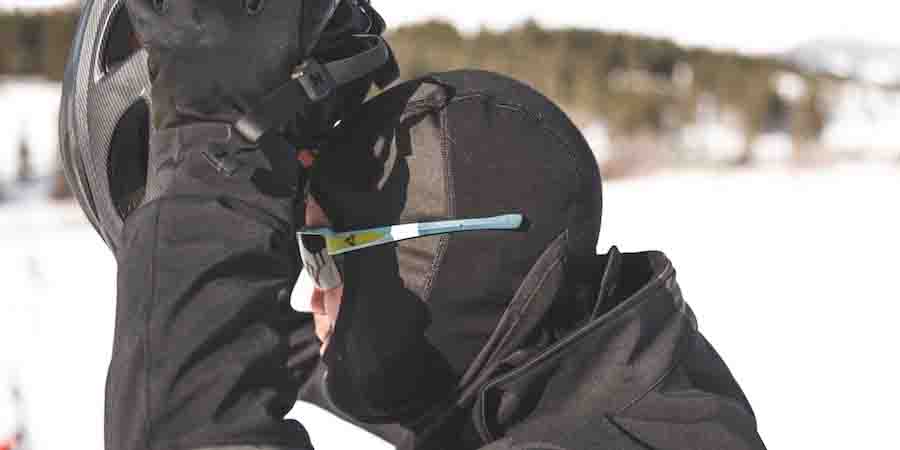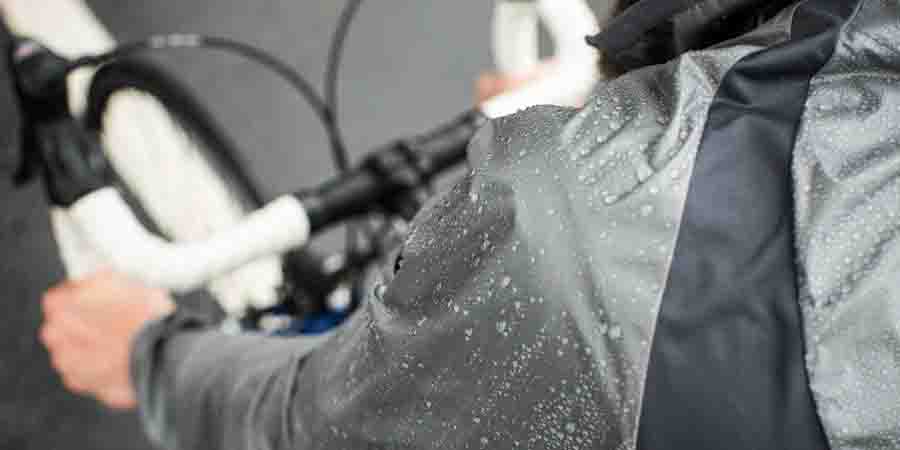Tips for riding bike in winter
Winter is coming, and many cyclists go into hibernation. But with the right preparation and mentality,riding bike in winter can be very beneficial. You can definitely change commuting by car to commuting by bicycle. You will avoid noisy traffic, speed up your heart rate and burn a lot of calories. You will also start working energetically, having completed something before your workday begins, and thus get the complacency (deserved).
Another advantage is that the crowded bike lanes and trails in summer have been modified to become happy and crowd-free in winter.
The following tips can help you continue to spend the winter happily:
Easy access to winter cycling
The conditions are more challenging than riding in the warm season, so start with a shorter ride to adapt to the environment and exercise your equipment.
Ride a bike you are familiar with
. You are used to the way the bicycle is handled; there is no need to buy a winter bike-just add or upgrade some components on your current bike.
Ready to see and be seen
. Prepare for riding after dark by significantly enhancing the lighting (including bright headlights, safety lights and reflectors).
Check and adjust tire pressure
In cold temperatures, air pressure loss occurs faster; inflate the tire to the lower end of the recommended range. Consider switching to tires with stronger grip.
Dress warm
. Wear layers so you can adapt to changing conditions; you also need rain gear,
Gloves, and a warm helmet and bicycle shoes.
Winterize your riding strategy
If there is dirt or ice on the bike lane or road shoulder, please use the right lane instead. Ride loosely on bumpy, icy or wet roads to improve handling.
Clean and cover your bike
. Dirt and/or ice can quickly accumulate on winter roads, and then accumulate on your drivetrain, frame, and other components.
Keep the electric bike battery warm
Cold temperatures can quickly drain battery power, so store your battery indoors and use battery-saving riding strategies.
We will cover cities and commuter bikes in this article, but if you plan to ride on gravel or mountain bike trails in winter, many of these tips also apply.
How cold is it to ride a bike? It is too cold at any time and you will feel uncomfortable-and not ready-go as far as you plan to ride. If your bicycle breaks down and cannot ride, you may have to do this.
Fat bikes: Special mountain bikes equipped with extremely wide tires allow you to ride on snow-covered terrain in winter.
Easy access to winter cycling
Cycling in winter is not an all-or-nothing proposition. Start slowly to help build confidence, hone skills and put down equipment. Overstretching too early can lead to disappointment, and a short and interesting ride can inspire the enthusiasm to move on. If you have a long commute to work, the following strategies will help:
Take part of public transportation. Many buses and trains have bicycle racks or storage areas.
Drive part of the road. Parking and cycling on the remaining roads can shorten the riding time and allow you to avoid dangerous commuting sections.
Alternately ride the sky. Ride a full commute every other day or every three days.
Ride the bike you already know
Bikes designed for pavement and dirt are a better choice in wet and slippery conditions, but any bike you ride in other seasons can be adapted to winter riding.
In winter, ice and dirt on the transmission system accumulate faster, and the suspension system is more sluggish in cold weather, so some people prefer to ride an older, more basic bicycle. This may mean that the bike’s gears and shock are only at the front (or no shock at all). For braking in wet weather, bicycles with disc brakes are more effective than bicycles with ring brakes.
No matter what kind of bicycle you have, you can set it up for winter conditions. Lighting and
tire
Is the most important consideration (described below). Add mudguards to prevent snow, water and mud sprayed by the tires. Fit
The thermos bottle goes into your bottle cage and fills the bottle with hot drinks (or even warm water) to help dissipate the chill.
Ready to see and be seen
Daylight in winter is fleeting, so be prepared to ride in total darkness. This means bright lights and non-negligible reflectivity. The battery consumes faster in cold environments, so charge the battery fully before any ride and carry spare batteries for non-rechargeable lights.
Bicycle Light
Get the brightest lighting you can afford, especially in the front. The two light sources in the front and the two light sources in the back provide backup in the event of a lamp failure; they also provide multiple visible points.
Front light: The brightest light on the handlebar; another light illuminates your arm or helmet, so you can guide it independently of the light mounted on the handlebar.
Tail light: Put the brightest flashing safety light on the back of the bike, and put the other on the helmet, backpack or clothes. Unfolding the lights in this way makes the movement of the two lights slightly different, which can more effectively attract the driver’s attention.
How bright is it bright enough? Suppose you don’t have street lights everywhere. The minimum brightness of the front handlebar mounted lights is 500 lumens; in the rear, the minimum brightness is 100 lumens. The auxiliary lights, front and rear, don’t have to be so bright.

Reflective bicycle clothing
Most bicycle clothing, unless specifically made for off-road riding, has reflective trims. The more reflective elements you have, the better. If you already have a reliable but not reflective rain gear, please wear
Reflective vest or belt
over it.
At the very least, you want the driver to approach from any direction to detect at least one reflective element. You can also add
Bring reflectors or reflectors to your bicycle, clothing, or bicycle bag to increase visibility.
Check and adjust tire pressure
Inflate the tire to the low end of its pressure range. All tires are listed with acceptable pressure ranges (usually on their sidewalls). Riding on a tire that is pumped to the lower end of its range will cause more of the tire’s surface to come into contact with the road, thereby increasing traction. “Softer” tires can also absorb bumps, which helps you maintain control when you encounter potholes or rough places.
Check the tire pressure before each ride. This may be the most neglected daily maintenance task in riding. Over time, the tire loses a small amount of pressure, and low temperatures also reduce the air pressure. Get in the habit of checking and adjusting the tire pressure before each ride. If your tires are at the low end of the pressure range, this task is more important than ever; a small amount of pressure loss will cause you to use tires that are outside the acceptable range.
Consider switching to multiple sections and/or wider
Bicycle tires. Tires with a deeper, rougher tread have better grip on muddy, wet, or muddy surfaces. Wider tires provide more surface area on the road and provide more traction. Your bike may only accept certain tire widths, so please do some research and talk to a bike technician to make sure it fits different tires.
The choice for icy and snowy roads is
Studded bicycle tires work like studded tires on cars. In harsh conditions, the high cost of studded bicycle tires can be a worthwhile investment.
Flattening prevention.
Replace flat tires. It is neither fun nor easy in cold and stormy conditions, so it may be wise to buy puncture-resistant tires or inner tubes. Tubeless tires are another consideration because they are less prone to blowouts than tires with tubes. A simple and affordable way to add flat resistance to inner tube tires is to install a
Between the tire liner tube and the rim.

Dress warm
Like other outdoor activities, layering bike clothing is the correct strategy for winter riding. It feels a bit cold at first because you will warm up while riding. However, if you do not warm up enough, you can choose to add another layer from the bike bag. It is also wise to wear a warm jacket for rest or repairs, because when you do not step on the pedals, you will quickly get cold.
If the weather is really cold, you also want to have a sweat-wicking base layer under your bicycle clothes. At least, you need to be warm
Tights, warm long-sleeved jerseys and waterproof cycling jackets and pants. You don’t have to buy bicycle-specific clothing for all levels, but professional bicycle clothing has the function of making you more eye-catching and comfortable when riding.
Cycling headwear: A riding cap or toque that fits under the helmet will add a surprising sense of warmth. For severe colds, consider a mask or helmet that covers more head. Some helmets can be used for more than one activity (snow/biking) and have interchangeable pads to adjust their warmth retention. Add goggles to protect your eyes.
Egg:
Fully waterproof bicycle gloves can keep your hands dry and warm in winter. Find the warmest pair of gloves that will still give you full control of your brakes and gear lever. You also need them to maintain good grip in wet weather.
Bicycle shoes:
Most cycling shoes are very fit to improve pedaling efficiency, so some winter riders will switch to a slightly larger and different cycling shoes to accommodate thicker socks. Adding wind and waterproof shoe covers is another way to increase warmth. Stepping on the soles in winter is important to provide traction when you have to leave the bike.
Hand warmer and foot warmer:
A great accessory for any winter activities, air-activated heaters that can slide into gloves or shoes may be a godsend on cold days. Heaters do not heat up immediately, so please take them out of the sealed package a few minutes before riding.
Winter cycling strategy
Although the far right side of the road seems to be a place away from injury, this is not necessarily the case in any season. The immediate roadside area is covered by snow, dirt and broken glass. In addition, the farther to the right you are, the harder it is for the driver to spot you in the dark.
Occupy lanes: Riding in the middle of the lane on the right can make you more visible and prevent drivers from trying to squeeze in when they pass by. (On the contrary, they tend to move the entire lane to the left.) You can also keep the bicycle away from the rubbish on the side of the road. Note: If the bike lane on the road is full of snow or other dangers, please use the right lane instead.
Easy riding: The locked knees and elbows make it difficult to respond smoothly. Conversely, when running on snowy ridges or other gravel roads, stay relaxed and absorb any movement with your legs. Stay vigilant and be prepared to bypass ice, smooth leaf-covered surfaces, or punctured tire debris.
Watch out for areas where the snow melts, as it may refreeze overnight. The bridge deck and low places are also prone to icing. If you end up overturning in an icy or slippery place, try to slide without braking or turning.
Clean and cover your bike
Even with mudguards, snow and road grit can stick to bicycle parts, especially chains and transmission systems. Minimize the accumulation of rubbish to help make everything work smoother. So regular maintenance is a good idea in any season and is essential in winter.
Cleaning and lubrication: Wipe the chain, transmission system and other bicycle components immediately after particularly dirty riding (if you ride frequently, at least once a week). Also do more thorough cleaning and lubrication every few weeks. After wiping or full cleaning, lightly repaint the chain and transmission system with “wet”.
Clean the brakes: After snowing or dirty riding, be sure to wipe the brakes and ensure that the contact surface with the wheels is clean.
Provide shelter for your bike
Rain and freezing temperatures are difficult for bicycles, so if possible, it is best to store your bicycle indoors. The next best location is under the carport, building eaves, covered porch or garage, where you can shelter from rain and snow. You can also buy a bike cover, or make an impromptu one with a tarp or an old grill cover in a pinch. If you really have to leave the bicycle outside and it freezes, please defrost the moving parts before riding. You can bring the bicycle into a warm indoor space to speed up the defrosting process.
Keep the electric bike battery warm
Electric bicycle batteries consume faster in cold temperatures, so try to minimize the time the battery is outdoors. Although you cannot do anything with the outside temperature while riding, you can remove the battery every night and store it in a heated room.
For some batteries, you can also buy a separate protective cover to help them stay warm during riding. Cover or not, assuming that your cruising range will be reduced in winter, and ride conservatively to maximize battery life. This means longer time in eco mode and less time in turbo mode.
A mentality suitable for all seasons
With careful preparation, you and your bicycle can travel happily throughout the year. Coupled with adventurous spirit and a bit of perseverance, who knows? In summer, you may even find yourself counting the days until the next winter riding season.

Our factory provide OEM and ODM,if you are interested in our electric bike, you can log on our official website to know more about details. If you have any query or electric bicycle transportation problem,please feel free to contact us and we will contact you APSAP. https://gzdlsdz.en.alibaba.com/
Please Leave us an inquiry.We are looking forward to your arrival.
 Shuangye ebike
Shuangye ebike
